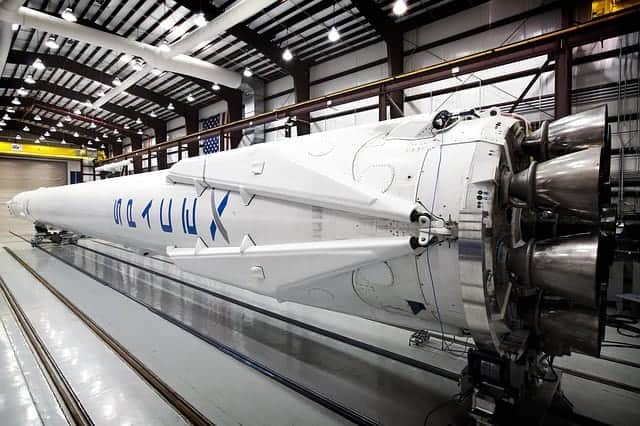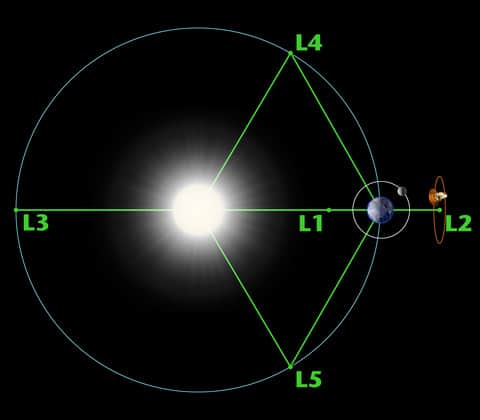This telescope will be delivered into space using the Ariane 5 rocket. Unlike the Hubble scope, James Webb won’t orbit the Earth, so no shuttle use. The Ariane 5 rocket is one of the most reliable space vehicles of the European Space Agency (ESA). It has 80 successful recorded flights.
The James Webb Space Telescope (JWST) is considered to be a successor of the Hubble Space Telescope. This larger space exploration equipment is more capable of gathering the light of longer wavelengths, or infrared, and analyzing them in its imaging systems.
Consequently, this ability enables James Webb to trace back the very first galaxies created when the universe was still young. Likewise, it is also capable of observing the formation of planets and stars inside of the dust clouds that obscure us from seeing now.
Where is the planned launch site of the James Webb?
The forecasted launch date of James Webb Space Telescope is on March 30, 2021, if no further delays pop up. The planned launch site of this telescope is in Kourou, French Guiana at the Arianespace ELA-3 launch complex inside the European Spaceport.
Could SpaceX Falcon 9 Do It?
The SpaceX Falcon 9 is already capable of launching any of NASA’s critical and highly expensive space missions. These top rated missions are comparable to Mars rover, Hubble Telescope, and the latest James Webb Space Telescope.
However, for the Falcon 9 to successfully lift the James Webb, it needs to pair with another rocket to provide a stronger Delta-V. This Category 3 LSP accreditation serves as a proof of NASA’s confidence in SpaceX for its Falcon Heavy rocket which has twice the capacity of Ariane 5.
Falcon 9’s lift force is not that strong yet compared to the Ariane 5 rocket. The latter’s booster can effectively lift off 10,800 kg to GTO with much more energy left to deliver James Webb to L2 completely. Falcon 9, on the other hand, is only capable of lifting 8,300 kg to GTO and would need more Delta-V for L2 destination.
Its two-stage Falcon 9 has gained NASA’s Category 3 Launch Services Program (LSP) on November 8, 2018. It has celebrated its debut on June 2010 and has successfully launched around 60 flights that are tucked under its belt.
Aside from its impressive performance, Falcon 9 becomes highly competitive when paired with ULA’s Atlas V rocket. Considering as a standalone, both Falcon Heavy and Falcon 9 offers comparable performance with Atlas V but at a more economical cost.
How Far Will the James Webb Be From Earth?
The Hubble Space is around 570 kilometers from Earth and orbits around it. Meanwhile, James Webb will be positioned at a distance of 1.5 million kilometers from Earth. This distance is the L2 Lagrange point. It is the Lagrange point that will always allow shade from the Sun. Meaning the James Web will always be in the shade of the Earth.

Why The Infrared Telescope Again?
This space telescope was created to study the first galaxies and stars formed millions of years ago after the great explosion. We can only do this by using infrared wavelengths, and through this, we can observe the formation of stars and planets inside the cloud dust, which is not observable with visible light. To learn more about the capabilities of the JWST, take a peek at our other article.
How Much Bigger is the JWST Than the Hubble?
This new space observatory aims to conduct deep space observations with the stars and galaxies formed in the early ages of the universe. For this to be possible, James Webb must have a larger primary mirror than the Hubble Space.
James Webb’s primary mirror has a diameter of 6.5 meters while Hubble Space’s primary mirror is 2.4 meters in diameter. This means James Webb that the overall collection area and diameter is 6.25 times and 2.5 times larger than Hubble Space, respectively.
Another great thing about this larger size is the wider field of view of the said telescope. Its field of view is comparative to the NICMOS camera of the Hubble Space is wider. Likewise, James Webb has better resolution compared to the infrared on the Spitzer Space Telescope.
How Large is its Sun Shield?
Aside from its primary mirror, this telescope has a large sun shield which has a dimension of 12 meters by 22 meters. It is almost half the size of the 737 aircraft or about one tennis court area.
What are Other Future Space Telescopes in the Planning?
Even though James Webb has not reached space yet, still there are several upcoming future plans for space telescopes. The next thing after James Webb is the Wide Field Infrared Space Telescope (WFIRST), which is still in its planning stage. Aside from that, there are four other future space scopes in the inception process.
The WFIRST is another infrared driven space telescope with a wider angle. This unit is derived from the older Hubble telescope which would no longer be used by the National Reconnaissance Office. It is planned to have the resolution imageability of Hubble but with 100 times the area capacity to be captured.
Second innovation planned to be created is the HabEx or Habitable Exoplanet Imaging Mission. This unit intends to capture photos of planets revolving from other stars. It can capture images from various planets but one which is similar to Earth. Likewise, using this telescope, we can measure the atmosphere of these exoplanets similar to Earth and see if other life forms exist there.
The third will be the Lynx, an x-ray type of space telescope. Its name is derived from an animal Lynxes which has the innate trait of seeing through the transparent nature of an object. This innovative space telescope will complement the function of James Webb. This x-ray telescope can do several purposes such as detecting radiation from hot gases, observing the origin and formation of black holes.
What is the Difference Between Herschel and Webb?
Both Herschel and James Webb space telescopes utilize infrared in studying the universe, but the main difference lies in the range of the wavelengths captured.
For Herschel, its wavelength range is between 60 to 500 microns while Webb is between 0.6 to 28.5 microns. Meanwhile, in terms of size, Webb (6.5 meters in diameter) is a much larger primary mirror compared to Herschel (3.5 meters in diameter).
Herschel has a higher wavelength range because it intends to observe high-energy stars and galaxies, whereas Webb has a lower wavelength range to be highly sensitive in studying the first galaxies and stars in the universe.
Wrap Up
It is fun to ponder about what discoveries these giant and expensive telescopes will find. However, if you are like me and spent less than a thousand dollars on your telescope maybe some of the other articles may help you get the most out of your telescope. Here is a good article about compound telescopes.


